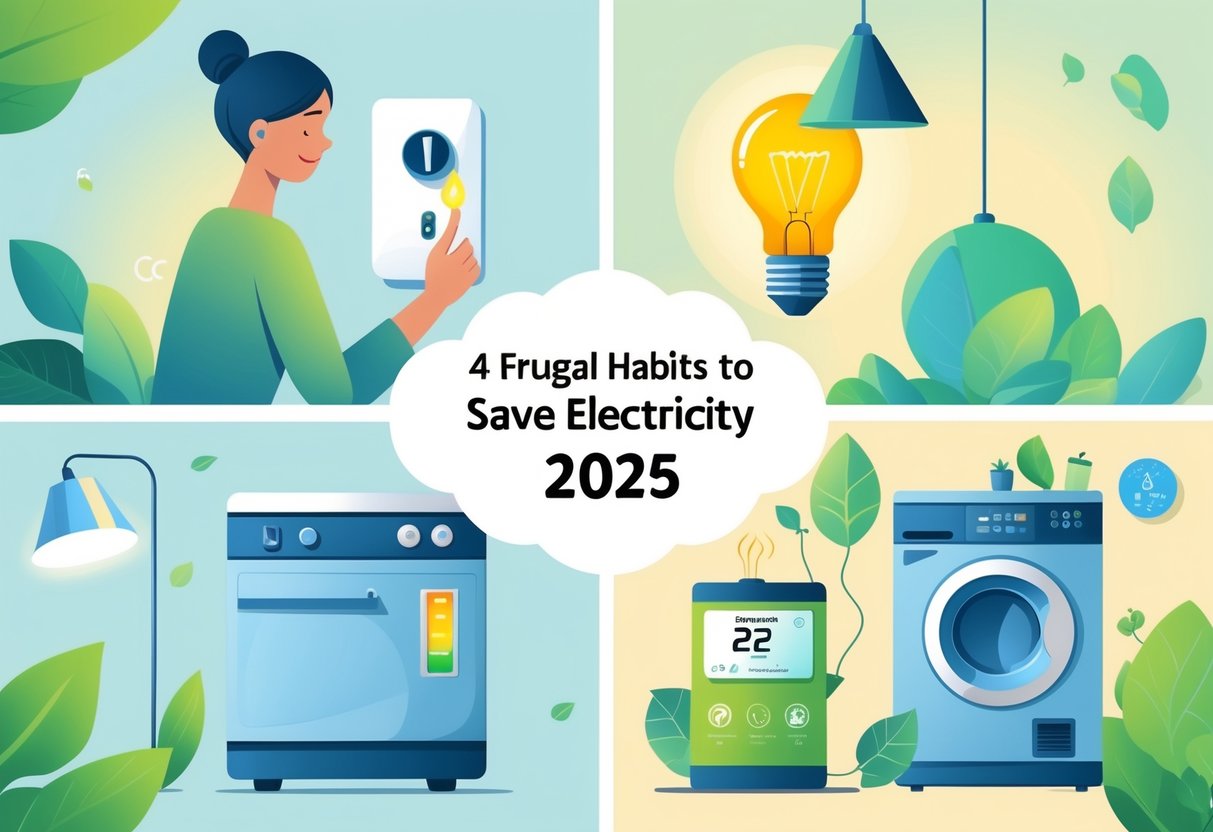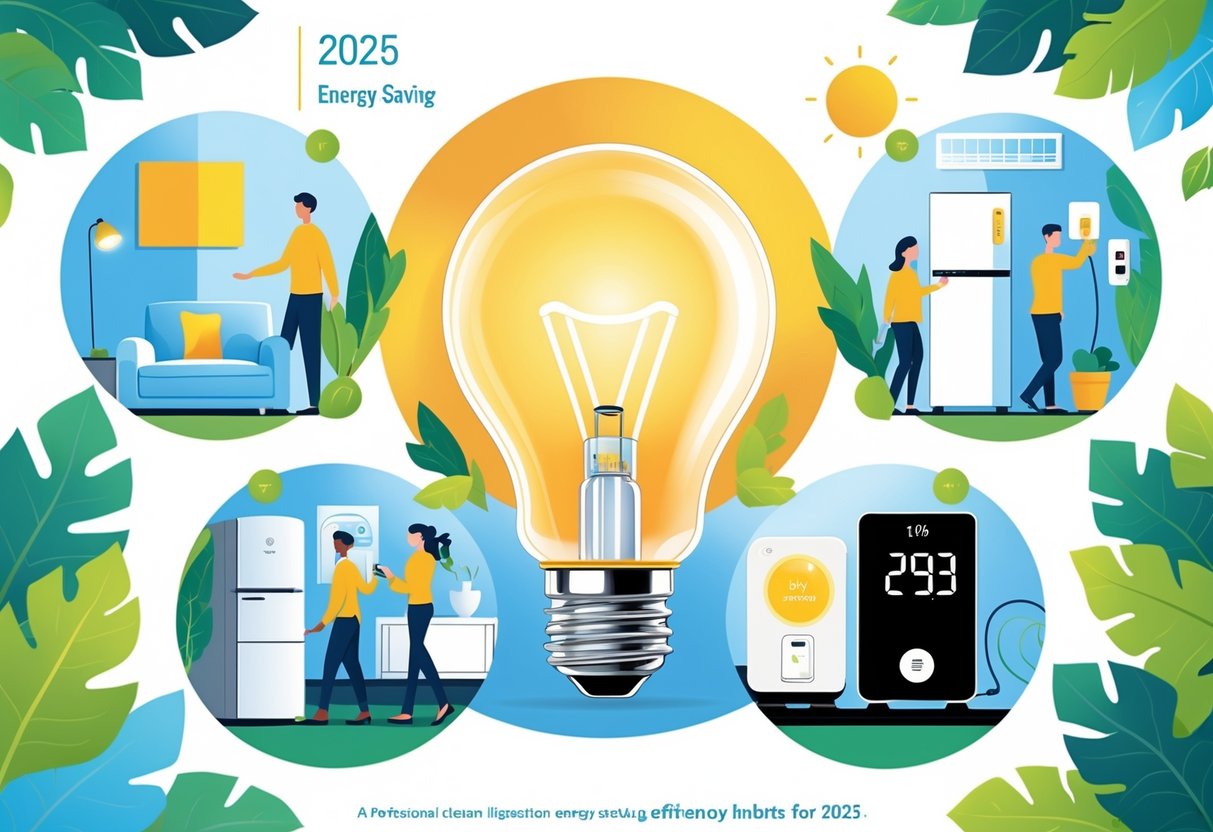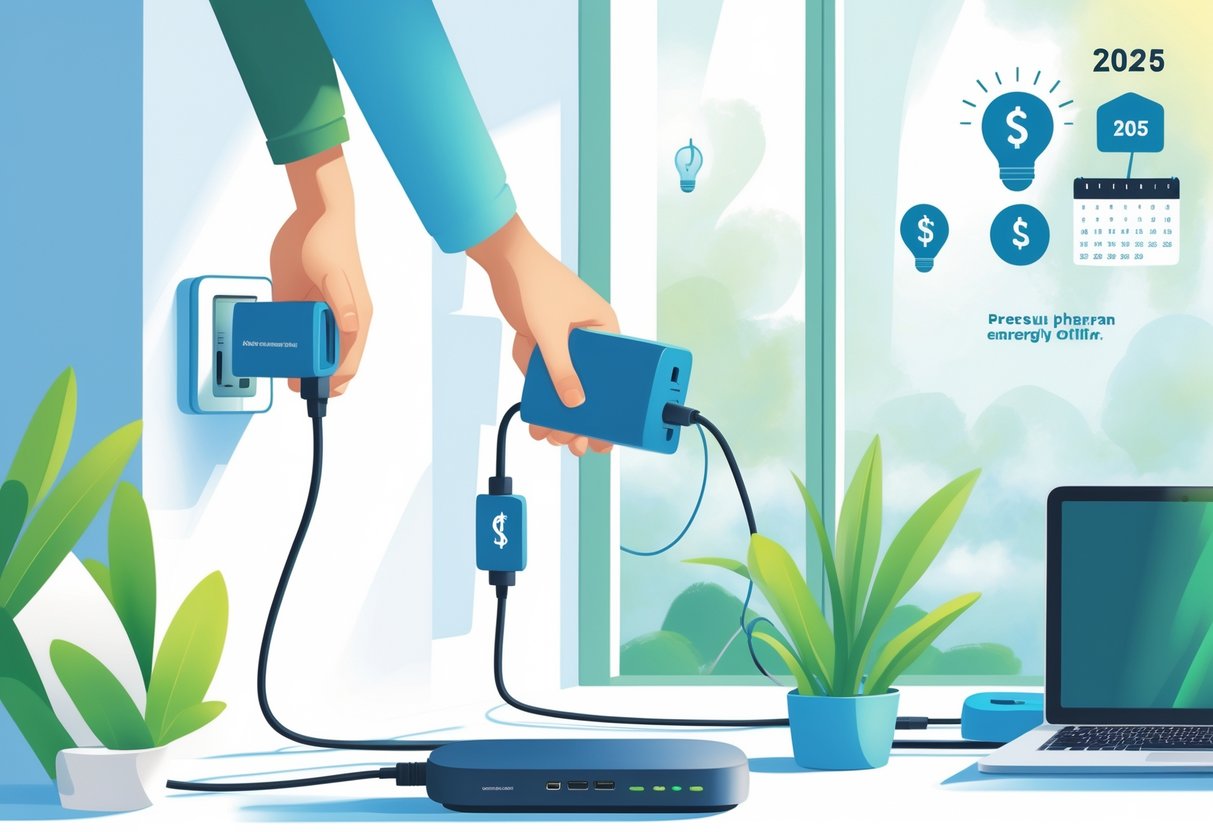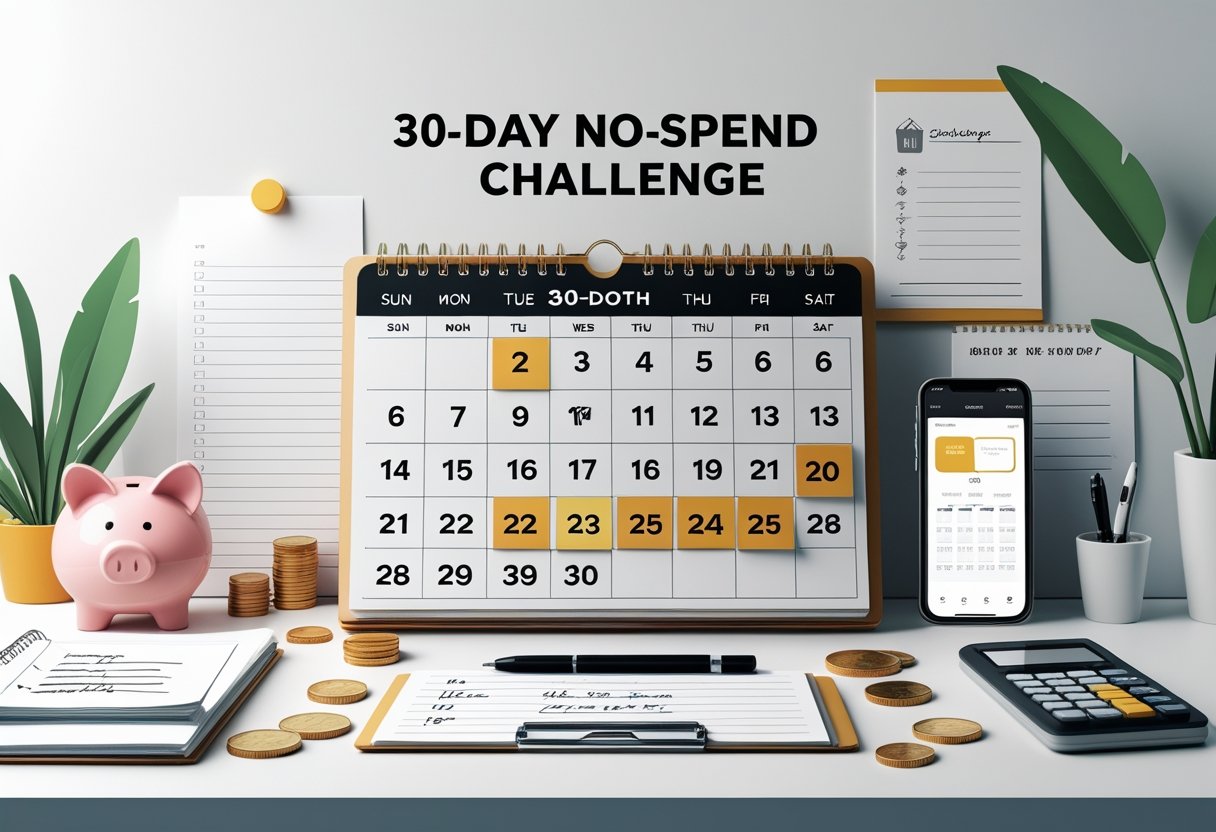Spending habits can spiral out of control if you're not paying attention. Before you know it, you're stressed about money and your savings account looks pretty sad.
4 Frugal Habits That Will Help You Save On Electricity In 2025: Proven Methods To Cut Your Power Bill
Electricity prices just keep climbing, and it's honestly putting a
squeeze on a lot of households. People are looking for ways to trim
their utility bills without making life miserable or giving up the
things they enjoy.

Little everyday tweaks and smarter choices about appliances can lead to real savings on your power bill. Technology's come a long way, and now it's easier than ever to track and manage how much juice your home uses.
If you figure out which gadgets are gobbling up the most power, you can change up your habits and actually see a difference in your wallet.
1) Switch to LED lightbulbs to reduce energy consumption significantly

LED bulbs use up to 75% less energy than old-school incandescent bulbs, and they're just as bright. That's a huge drop in usage, and it shows up as lower bills almost right away.
Swapping every bulb in your place for LEDs could save you around $225 a year, according to the experts. Sure, LEDs cost more upfront, but they last forever—well, up to 25 times longer than the cheap bulbs.
Going all-in on LEDs can slash your lighting bill by 90%. Even the Department of Energy backs this up for anyone willing to make the switch.
They don't get hot like the old bulbs, either. That means your AC doesn't have to work overtime when the lights are on in summer, so you get a double whammy of savings.
LEDs aren't just boring white, either. You can get them in all sorts of colors and brightness levels now, so you don't have to settle for weird lighting just to save a buck.
2) Unplug electronics and chargers when not in use to avoid phantom energy drain

Most electronics keep sipping power even when you think you've turned them off. This sneaky drain is called phantom load, or sometimes standby power.
Phone chargers are especially guilty. They keep drawing electricity even if your phone's not plugged in.
Things like toasters, lamps, and laptop chargers all quietly pull power 24/7. It doesn't seem like much, but together, it adds up over the year.
Unplugging stuff you're not using wipes out that waste. It's just about getting into the habit—yank the plug when you're done.
Depending on how many gadgets you have, you could pocket $50 to $150 a year just by unplugging more often. The more power-hungry the device, the more you'll save.
I'd say focus on the big items you don't use much. Make it part of your routine, and you'll see the difference by the next bill.
3) Run the dishwasher only when it is fully loaded to optimize electricity use
Dishwashers burn the same amount of energy whether they're packed or barely loaded. Waiting for a full load just makes sense if you want to get the most out of every cycle.
The Environmental Protection Agency says it doesn't matter if you run a few plates or fill it up—it uses the same juice either way. So, why not wait and save?
People who only run the dishwasher when it's full usually notice their bills drop. You're not just saving electricity, but water too.
Modern dishwashers are built to handle a packed load efficiently. Every run uses the same heater and motor, no matter how many dishes you've got in there.
It's kind of amazing, but just holding off until it's full can make your bill noticeably lighter after just a month or so. Over a year, those skipped cycles really add up.
4) Lower your water heater temperature to save on heating costs
Most water heaters come cranked way too high from the factory—usually 140°F. That's hotter than most people need for daily life.
Dropping the temp from 140 to 120 degrees can shave 6-10% off your water heating costs. The Department of Energy says this is one of the top ways to cut your water heating bill.
Honestly, 115-120 degrees is plenty hot for showers and dishes. You won't even notice the difference, but your wallet will thank you.
Every 10-degree drop knocks another five percent off your heating costs. It's a small change, but it really adds up over the months.
It's usually just a matter of twisting a dial or pressing a couple buttons on your heater. Most have clear markings, so it's not rocket science.
Water heating eats up 18-25% of your home's energy. Even a little tweak to the temp can make a real dent in your monthly bill, and you'll still have plenty of hot water for everything you do.
Understanding Electricity Usage in 2025
Homes these days are loaded with digital gadgets and smart tech, but heating and cooling still eat up the biggest chunk of power. At the same time, all those connected devices are quietly sipping electricity, even when you're not using them.
Key Trends in Home Energy Consumption
HVAC systems still top the charts for energy use, gulping down 40-50% of your electricity. Setting your thermostat to 68 or lower in winter really helps—every extra degree can bump your usage by 6-8%.
Water heating comes in second, making up 15-20% of the bill. Old-school tank heaters keep running non-stop, so they're always drawing power.
Lighting's gotten cheaper thanks to LEDs, but it still makes up 8-12% of usage. LEDs are still the best bet when you need lights on.
Big appliances—fridges, washers, dryers—use 20-25% of your electricity. Even when they're off, those little displays and sensors keep pulling power.
How Digital Devices Impact Power Bills
Phantom power's a real budget-buster—it hits about 75% of electronics. TVs, computers, gaming consoles, and smart home gadgets keep using electricity on standby, and you could be losing $100-200 a year just from that.
Streaming boxes, routers, and modems run 24/7. A typical router burns 6-20 watts non-stop, which is like leaving a light on all day, every day.
Smart home stuff adds to your baseline. Connected thermostats, cameras, and voice assistants can tack on 5-15% more to your monthly usage because they're always online.
Even unplugged chargers draw a bit—0.1 to 0.5 watts each. That sounds tiny, but multiply it by all the chargers in your house, and it's not nothing.
Maximizing Savings With Modern Technology
If you use smart gadgets and time things right, you could cut 10-23% off your electric bill every year. Tech can do a lot of the heavy lifting for you if you let it.
Smart Home Solutions for Energy Efficiency
Smart thermostats are the MVPs here. They learn when you're home and tweak the temperature without you having to think about it.
Programmable features on these thermostats can trim heating and cooling costs by 8-15% a year. They keep you comfy but stop wasting energy when you're asleep or out.
Smart climate control lets you set different temps in different rooms. That way, you're not heating or cooling empty spaces.
Smart plugs are awesome for killing phantom power. They cut off juice to TVs, game consoles, and chargers when you're not using them.
Connected lights use sensors to turn on only when needed. They'll even dim themselves if there's enough daylight, so you're not burning extra watts for no reason.
Some smart home upgrades to consider:
- Smart thermostat: $100-300 up front, saves $130-145 a year
- Smart plugs: $10-25 each, can wipe out 5-10% of your usage
- LED smart bulbs: $8-15 each, use 75% less energy than old bulbs
Leveraging Time-of-Use Rates
Time-of-use electricity pricing hits you with different rates depending on when you use power. Peak hours? Yeah, they usually cost two or three times more than off-peak times.
Most utilities drop their rates between 9 PM and 6 AM on weekdays. On weekends, you'll often see off-peak pricing all day long, which is honestly a relief.
Running appliances during off-peak hours can cut your monthly bill by anywhere from 15% to 25%. Dishwashers, washing machines, and dryers tend to be the real energy hogs when you run them.
Optimal scheduling strategies:
- Laundry: Toss in loads after 9 PM or before 6 AM
- Dishwasher: Set a delayed start so it runs late at night
- Electric vehicle charging: Use timers to charge overnight
Smart home systems can take care of shifting those energy-hungry chores to cheaper hours for you. Sure, you'll need to set them up at first, but after that, they just do their thing.
Pool pumps and water heaters really shine when you optimize for time-of-use. You can let them run during low-rate hours and still keep everything working fine even when rates jump.
Free Skills You Can Learn Online This Month: 5 Budget-Friendly Personal Development Opportunities
Personal development doesn't have to mean dropping hundreds on fancy courses or hiring a coach. Plenty of solid educational platforms out there let you learn new skills for free—and honestly, some of them are surprisingly good for boosting your career or just growing as a person.
Lots of households have trouble figuring out where their money disappears to each month. Even with a decent income, it's surprisingly easy to end up short before payday. Zero-based budgeting is a method where income minus expenses equals zero, meaning every dollar gets assigned a specific purpose before it's spent.



